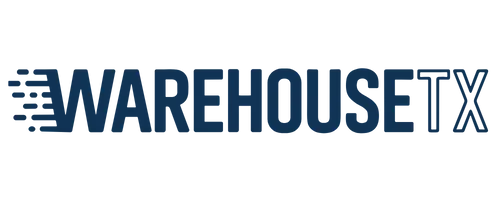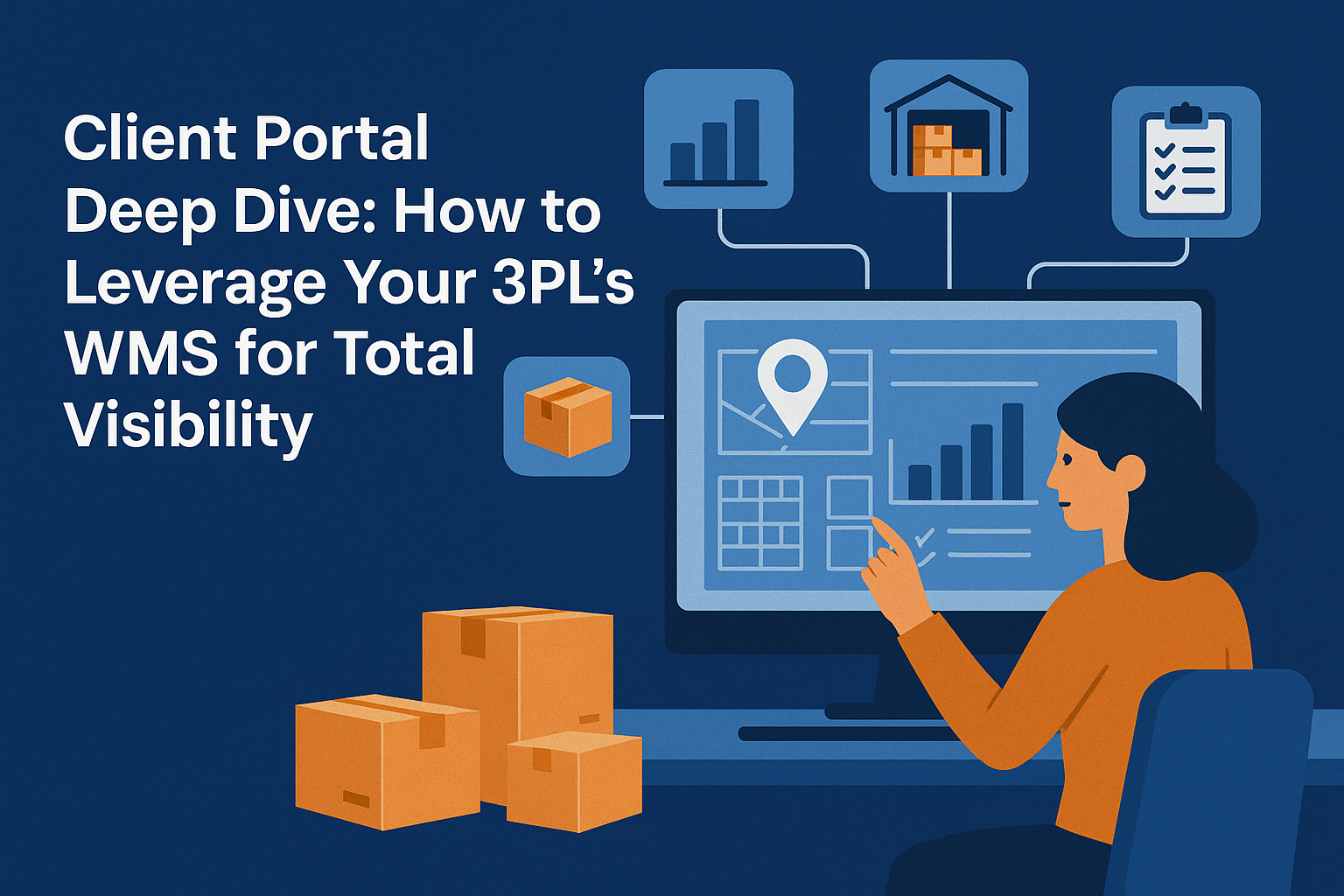In the fast-paced world of e-commerce, visibility isn’t just a buzzword—it’s the lifeblood of a thriving business. Without a clear, real-time view of your inventory, orders, and shipments, you’re flying blind. This is where a robust 3PL client portal becomes your most powerful tool. More than just a simple dashboard, it’s the digital command center that connects your business directly to your third-party logistics (3PL) partner’s Warehouse Management System (WMS), providing the transparency and control you need to make smarter, faster decisions.
This deep dive will explore how to fully leverage your 3PL’s client portal, transforming it from a static report viewer into an active engine for supply chain optimization. We’ll cover everything from real-time inventory tracking to advanced analytics, helping you harness the full power of this essential technology.
Beyond the Basics: What a Modern 3PL Client Portal Should Offer
Many businesses assume a client portal is just for checking stock levels. While that’s a critical function, a state-of-the-art portal offers so much more. It’s a window into the complete lifecycle of your products, from the moment they arrive at the warehouse to the second they land on your customer’s doorstep. When evaluating a 3PL, consider a portal that provides the following key features:
- Real-time Inventory Tracking: Not just a daily update, but a live feed of your stock levels, including SKU counts, bin locations, and lot numbers.
- Order Management & Fulfillment Status: The ability to submit, edit, and track orders in real time. You should see the status of every order, from “pending” to “picked” to “shipped.”
- Shipping & Carrier Integration: Access to shipping details, tracking numbers, and real-time carrier updates for every package.
- Return Management (Reverse Logistics): A clear view of incoming returns, their status (inspected, restocked, disposed), and the reasons for return.
- Detailed Reporting & Analytics: Customizable reports on order volume, inventory turnover rates, shipping costs, and fulfillment accuracy.
- Automated Notifications: Alerts for low stock levels, order exceptions, or other critical events.
Case Study: A Small Business Revolutionizes Its Operations
Let’s consider a hypothetical e-commerce brand, “Urban Threads,” a company selling unique, artisanal clothing. Initially, they were using a spreadsheet-based system to manage their inventory and communicate with their 3PL. The result? Frequent stockouts, delayed orders, and a lack of insight into their supply chain performance.
After switching to a 3PL with a comprehensive client portal, Urban Threads saw a dramatic transformation:
- Predictive Ordering: By analyzing order volume reports from the portal, the marketing team was able to launch flash sales with confidence, knowing they could predict demand and ensure stock was ready.
- Cost Optimization: The portal’s detailed shipping reports allowed them to identify peak cost periods and work with their 3PL to optimize packaging and carrier selection, significantly reducing their shipping expenses.
- Customer Service Excellence: When a customer called about a missing package, the support team could instantly access the tracking number and real-time carrier status, providing an immediate and accurate answer. This level of transparency boosted customer trust and satisfaction.
- Faster Returns Process: The reverse logistics feature meant that as soon as a returned item was processed, the system was updated, allowing the finance team to issue a refund without delay.
This case highlights how the client portal isn’t just for logistics managers—it’s a tool that empowers every department, from marketing and finance to customer service.
Comparative Analysis: The Difference Between a Basic and an Advanced Portal
Not all client portals are created equal. Here’s a comparative look at what separates a basic system from an advanced, high-performance one:
| Feature | Basic Client Portal | Advanced Client Portal (e.g., WarehouseTX) |
|---|---|---|
| Inventory Visibility | Static daily or weekly reports. May require manual requests for specific data. | Real-time, 24/7 inventory updates. Live view of stock levels, bin locations, and expiration dates. |
| Order Management | Batch uploads of orders. Manual tracking via email or phone calls. | Direct integration with e-commerce platforms (Shopify, Amazon, etc.). Automated order sync, real-time status updates, and easy order editing. |
| Reporting & Analytics | Limited, pre-defined reports (e.g., “Shipped Orders This Month”). | Customizable dashboards, in-depth reports on picking accuracy, inventory turnover, and cost per shipment. |
| User Experience | Clunky, outdated interface. Often not mobile-friendly. | Intuitive, clean interface. Accessible from any device (desktop, tablet, mobile). |
| Notifications & Alerts | None, or only sent via email upon request. | Automated alerts for low stock, order exceptions, or other critical events, sent via email, SMS, or dashboard notification. |
| Integration | Limited to no integration with other business tools. | Seamless API integration with major e-commerce platforms, marketplaces, and accounting software. |
Key Strategies for Maximizing Your Portal’s Potential
Having an advanced portal is only half the battle. The real value comes from how you use it. Implement these strategies to truly maximize your investment:
1. Integrate Your E-commerce Store
The first and most critical step is to connect your e-commerce platform (Shopify, WooCommerce, Magento, etc.) directly to your 3PL’s WMS via the portal. This eliminates manual data entry, prevents errors, and ensures orders are automatically sent to the warehouse as soon as they are placed. It’s the foundation of a seamless logistics process.
2. Set Up Custom Alerts
Don’t wait for a crisis to check the portal. Use the automated alert system to proactively manage your business. Set up notifications for:
- When a specific SKU reaches a low-stock threshold.
- When an order encounters an exception (e.g., an address error).
- When a return is received and processed.
These alerts allow you to address issues before they impact your customers.
3. Use Data to Drive Decisions
Regularly analyze the reports available in your portal. Look for trends in:
- Order Volume by Season: Identify your peak seasons to ensure you have enough stock and your 3PL is prepared for the surge.
- Returns Analysis: Understand which products are being returned most often and why. This data can inform product development and improve quality control.
- Shipping Cost vs. Speed: Compare different carrier costs and transit times to find the optimal balance for your customers and your budget.
4. Create and Manage Access for Your Team
Give different team members access to the data they need. Your customer service team needs order tracking, your marketing team needs inventory insights for promotions, and your finance team needs shipping cost reports. Proper access management streamlines workflows and prevents bottlenecks.
Navigating the Future of Logistics with Your 3PL Partner
The client portal is more than just a piece of software; it’s a symbol of the partnership between your business and your 3PL. By providing unprecedented visibility and control, it transforms a traditional vendor-client relationship into a collaborative one. A partner that invests in a robust, user-friendly portal is one that is committed to your success. Look for a 3PL with a strong technological backbone and a clear focus on empowering their clients.
Whether you’re a startup or a global brand, a fully optimized client portal is your key to mastering your supply chain, reducing costs, and ultimately, building a more resilient and profitable business. It’s the central nervous system of modern e-commerce fulfillment, ensuring that your fulfillment operations are always running at peak efficiency.
Frequently Asked Questions (FAQ)
What is a 3PL client portal?
A 3PL client portal is a secure, web-based platform that gives businesses direct access to their third-party logistics provider’s (3PL) Warehouse Management System (WMS). It allows for real-time tracking of inventory, management of orders, and access to detailed reports and analytics about fulfillment and shipping operations.
How does a client portal improve my business’s efficiency?
By providing real-time visibility, a client portal eliminates the need for manual communication and data entry. This reduces errors, speeds up the order fulfillment process, and allows you to make informed decisions based on live data. You can proactively manage inventory, optimize shipping costs, and provide faster, more accurate customer service.
Can I integrate my e-commerce store with the portal?
Yes, a modern and effective 3PL client portal should offer seamless integration with all major e-commerce platforms like Shopify, Amazon, WooCommerce, and more. This automated connection ensures that orders placed on your store are immediately sent to the warehouse for fulfillment, eliminating delays and potential human error.
Is a client portal secure?
Reputable 3PLs use advanced security measures to protect your data. Look for a portal that uses SSL encryption, multi-factor authentication, and secure servers. Data security should be a top priority for any logistics partner you choose.

